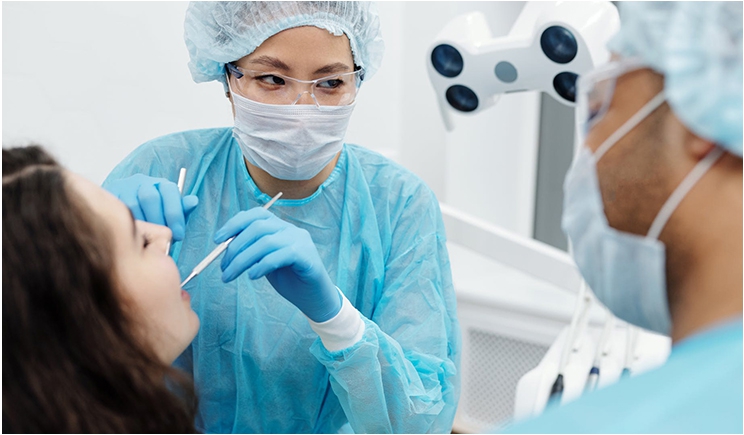
It seems like a lifetime ago and also just yesterday that dental practices around the country were shutting down due to COVID-19. Every aspect of the business of dentistry has been affected, from practice valuation to employment concerns to funding retirement plans and even tax changes.
Reopening doors meant discovering ways to heal your business, plan for recovery, and communicate changes to staff and patients in an effort to get them back. We are now one year in, and there seems to be a light at the end of the tunnel. So, it’s time to figure out which, if any, of these changes are expected to persist over the next year and beyond.
Transition Boom
In the recession of 2008, many dentists pushed off retirement plans, creating an increased need to sell going forward with more baby boomers reaching retirement age every year. What hasn’t changed is the trend toward consolidation in the industry. There are also more options for dentists to stay on post-sale to help ease the transition. The dental practices that came out of the pandemic better than they went into it have become more desirable to individuals and dental service organizations (DSOs) in competitive markets.
Valuation Conundrum
Since a typical valuation is based on the last 12 months of business, what can be done when two or more months had severe revenue dips? Although typical production declined due to the pandemic, many larger practices have rebounded to pre-pandemic numbers.
In some cases, it is wise to include older data to show what the practice should be doing in a normal year. Another approach would be to take the less affected months of data in the last year and annualize the results. Regardless of the approach taken, it’s important to note that Paycheck Protection Program loans should not be counted as revenue since those loans are forgiven.
Skills Gap
Dental school graduates are coming to the market less prepared than before. Credits that were needed to graduate were canceled or scaled back. For example, prior to graduating, students may have performed 20 crowns. Now they may only do five, increasing the skills gap, which is something that only time in the chair and great mentorship can overcome.
Hygienist Shortage
One perhaps surprising effect has been a severe shortage of hygienists. Many hygienists were forced to retire or stepped away from the industry after evaluating the risk-reward factors during the pandemic.
In their place, lower-paid hires are taking on some of their tasks as allowed by state laws so hygienists can optimize their time and see more patients. Hygienists can then potentially work in multiple rooms with these accelerated hygiene procedures, bringing down overall cost structures.
Pent-Up Demand
On the consumer side, yes, numbers were down for a while on the other side of shutdowns, but 20% growth is now expected year over year going forward due to pent-up demand. Putting off regular cleanings leads to more restorative work and, if that is put off, more advanced work will be needed. Dental care only becomes more expensive when it’s diverted.
Procedure Shift
Interestingly, the types of procedures that are being performed have shifted, perhaps as a result of the stimulus money being distributed. Even though it is not generally considered a good time financially, those who have money are getting work done they might not have done otherwise. Some of this work includes full arches, implants, and even cosmetic work.
Teledentistry
Teledentistry served its purpose during the pandemic when non-emergency visits were scaled back. While it may not be a sustainable method for performing routine dental care going forward, it can be combined with the use of artificial intelligence (AI) to enhance treatment planning and presentation. Dentists can review an exam with the help of AI, then discuss the results with the patient over a teledentistry call rather than another office visit, saving time for both parties.
Tax Changes
Regardless of a shift in the presidency, the pandemic has pushed the timetable forward for a corporate tax increase. It is now nearly a forgone conclusion that the capital gains rate will increase in 2022. As a result, many dentists are looking to get out before they get struck by a corporate tax increase by as much as the proposed 20 points for high-income earners. If not, dentists will have to look ahead to determine how long it will take to gain that difference back, making the mergers and acquisitions space even more frothy.
Bottom Line
If 2020 has taught us anything, it’s that we truly have no idea what the future holds. But with more buying and selling opportunities comes an increased demand for high-quality mergers and acquisitions advisors in the dental space to help find the best fit for both sides of the transaction. Lessons learned along the way can only help pave the way for the industry ahead.
Mr. Francis is the founder and CEO of Professional Transition Strategies. He has worked in the dental and medical field since 2005 consulting for practices, medical device companies, and groups of practitioners. He has used this knowledge to consult more than 50 startup companies and dental practices, as well as help build well over 100 dental and medical practices across the country. He has owned all or part of more than 20 practices and has been an investor in multiple DSO concepts. He created Professional Transition Strategies (formerly Headwaters Practice Consultants) to facilitate the sale of over 350 dental practices as a buyer’s representative, seller’s representative, or transaction broker.
Related Articles
A Look Ahead: The Dental M&A Landscape in 2021
Everything You Need to Know About the Invisible DSO
Lessons from the Pandemic for Dental Practices: A Year Later











